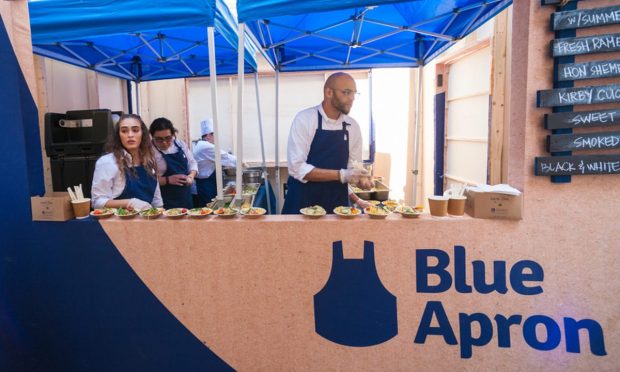Blue Apron CEO: Meal Kit Customers Take Price Increases on the Chin

As inflation continues and the impending recession weighs heavy on consumers’ minds, many are making changes to their food purchasing. However, meal kit company Blue Apron is noticing that, while the changes in the overall economy might affect their decisions, price increases implemented by the company have not had much of an impact at all.
Blue Apron President and CEO Linda Findley told analysts on a call Monday (Aug. 8) discussing the company’s second quarter 2022 financial results that the meal kit provider has parsed which factors have customers pulling back and which have surprisingly little effect.
Observing the behavior of those who “choose not to order” from the company, “through focus groups, through surveys, and through really detailed data analysis,” Blue Apron has determined that pricing actions have not negatively impacted sales.
“We’re very clear on the difference between the pricing change and macroeconomic factors, which helps us think about our communications and our marketing programs and our pricing really effectively,” Findley said. “And we do know that a big part of what we’re seeing is macroeconomic as opposed to being directly related to the pricing change.”
The company’s Chief Financial Officer Randy Greben said through the meal kit provider’s “test and learn philosophy,” the company observed that price increases put into effect around a year ago, before inflation weighed as heavy on consumers’ minds as it does today, yielded “almost no incremental churn or change to order frequency.” Similarly, this year, the company has not been seeing the “small amounts of churn that we would have expected.”
Similarly, Berlin-based meal kit provider Marley Spoon, which operates in eight countries across three continents, shared on a call with analysts in late July that “customer behavior [was] only briefly impacted” by the price increases implemented across regions.
The fact that these companies have not seen their customers be especially pricing-sensitive is notable, given that other food businesses such as restaurants and grocers have seen more of an impact. However, this disparity may have something to do with meal kit providers’ target demographics. Meal kits tend to be a more premium product and many food sellers are seeing the most trade down from lower-income consumers.
For instance, on an earnings call with analysts in late July, McDonald’s President and CEO Chris Kempczinski noted that the restaurant chain is “seeing some trade down” from these lower-income customers, adding that they are opting for items from the company’s value menu and purchasing “fewer combo meals.”
Related news: As Restaurant Prices Rise, Fast Food Chains See Lower-Income Consumers Pinching Pennies
Grocers, too, are seeing customers shift their spending in the face of rising prices, opting for private-label products, for example, rather than name brands. In fact, research from the May U.S. edition of PYMNTS’ Digital Economy Payments study, “Digital Economy Payments: How Consumers Pay in the Digital World,” showed that consumers’ average spending on their grocery purchases fell between March and April even as food prices rose, indicating that consumers were likely making the choice to shift to lower-priced brands or products.
See also: Insufficient Funds Caused 27% of Consumer Payment Declines in April
